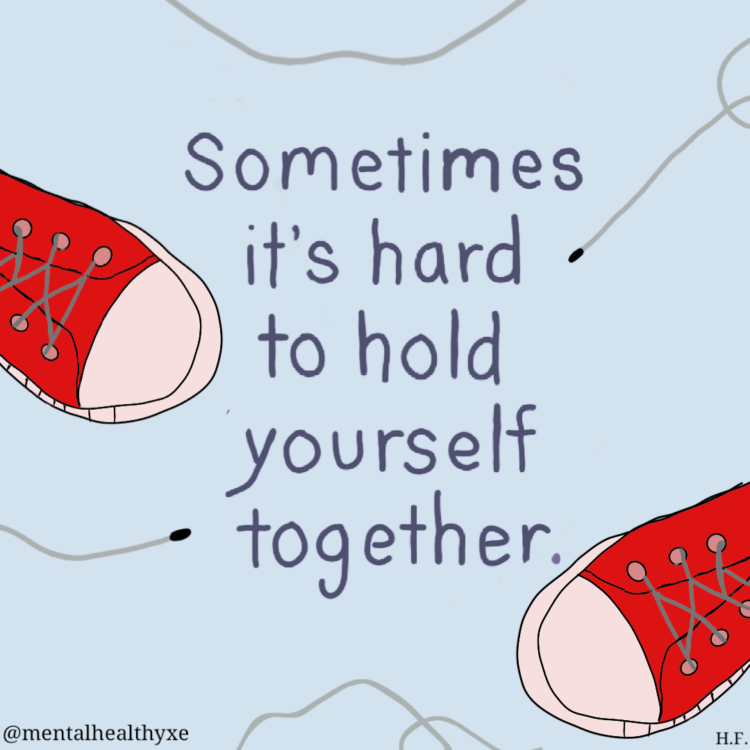The Difference Between 'Top-Down' and 'Bottom-Up' Therapy, and Why It Matters
A few years ago, I was invited to attend a new support group for people diagnosed with complex trauma. I was (unsurprisingly) anxious about going, but hopeful it could help me. When I got there, I expected that nervousness to calm down, but instead, it got much worse. It took every bit of strength in me not to run out of the room. When it was over, I went home and hid under my blankets for three hours.
Eventually, I decided to give the group one more try. I experienced the same terror, and to top it off, I spent the majority of the hour crying uncontrollably. It was such a dysregulating experience that in the days that followed, I deteriorated into a new depressive episode. It was devastating and left me feeling broken and like a walking open wound. Needless to say, I did not return.

A few months later, when I was able to think more clearly, I tried to figure out what had happened. I eventually realized, in my opinion, nothing had been done to ensure I (or anyone else) felt safe at the outset of the group. From what I recall, we were not given information on what to expect in advance. I remember I was unsure if the leader intended to disclose my story without my permission, and likewise I don’t remember there being a conversation on if it was appropriate for folks to share details that could be triggering. It was akin to being thrown into the deep end with the expectation you’d just learn to swim.
No wonder group had felt so awful, and now I know why. It’s my perspective this group did not utilize a bottom-up approach, and so my nervous system was on such high alert that being there was nearly unbearable. I don’t think the leader was bad at their job, I just think they didn’t consider or weren’t trained in the style I needed.
So, what is the difference between “top-down” and “bottom-up” therapy, and why does it matter? The first thing you need to know is the words “top” and “bottom” are references to particular sections of the brain and what they are responsible for. It’s also important to know that until recently, most therapy has followed a top-down approach, and as you may have guessed from my story above, this doesn’t always have the desired results.
It’s believed the top section of the brain is concerned with thinking, speaking and present-day emotional awareness. Top-down therapy typically means working through things cognitively. This involves stuff like thought patterns, communication, decision-making and problem-solving.
The bottom section of the brain is thought to include the areas responsible for memories, impulses and survival responses. Therefore, bottom-up therapy works on understanding sensations, education on the nervous system, grounding, mindfulness and body awareness.
The new school of thought theorizes bottom-up approaches are especially helpful for folks who have experienced trauma, particularly long-standing, developmental or complex trauma. The suggestion is top-down methods often don’t work well for folks with this type of history because it presupposes what needs adjusting is the person’s way of thinking. This does not take into consideration the automatic nature of the nervous system, or in other words, a body that is hardwired to perceive danger where there is none.
In regards to trauma, bottom-up takes into account that the first thing that typically occurs is the body reacting, and then later on, the mind thinking. To paraphrase Peter Levine: You cannot properly process thoughts if your insides are telling you that you are standing in front of a tiger.
In my case, I could not effectively join the above group until my nervous system felt safe there. Unfortunately, since this did not happen, I could not tolerate it.
So, if therapy or popular “self-help” methods have caused you to feel like your hair is on fire and you need to run screaming from the building, there is a good chance your nervous system has kicked in. If this (or something like it) is a regular occurrence, it’s possible you may benefit from bottom-up methods. I certainly have!
I’ve been with my current therapist for a long time, and she uses a bottom-up approach. This doesn’t mean I don’t ever have discomfort or anxiety in therapy, but what it does mean is it isn’t ignored and we attempt to regulate it.
Recently when COVID-19 restrictions were starting to lift, we went back to in-person sessions after a year of virtual. When I was finally sitting in front of her, I right away felt activated. I trust this therapist a lot, and so I quickly told her how I was feeling. She was understanding and reassured me it made sense because my nervous system hadn’t been in the same space with her for almost a year and it was probably being a bit cautious. This was helpful at taking any of the blame off me. We then did some grounding exercises until I felt more settled, after which we were able to move on. This clearly sounds much better than what took place in the previous story.

If you want to seek out a therapist that does things bottom-up, look for the following trainings: Somatic experiencing, emotion-focused therapy, eye movement desensitization and reprocessing therapy (EMDR), sensorimotor therapy, art therapy, polyvagal theory, compassionate inquiry and trauma-informed yoga. There are probably many others, and it’s always a good idea to have a conversation with a provider about how they practice and what theories they follow. You can also look into self-help that uses these methods.
It’s prudent to remember both top-down and bottom-up are valid methods, and in reality, most therapists likely use some type of a blend of the two. Additionally, while folks who have experienced trauma may need to start at the “bottom,” the goal would likely be to work one’s way to the “top” eventually. There are also therapists who attempt to work with one foot in each realm, and this may be helpful, too.
If you have tried therapy in the past and it seemed to do more harm than good, you may feel discouraged or like you are somehow “broken.” I can certainly relate to those feelings. I’ve had the good fortune to have support that fits my needs and this has been incredibly healing. I’m here to encourage you, that in a similar way, it very well may be a bottom-up approach is what works for you. You are worth it!
If you enjoyed this article, please take a moment to check out some of my other articles here on The Mighty. If you’d like to follow along with my journey, you can find me on Instagram as @mentalhealthyxe.
Getty image by metamorworks

